Gardens are a source of beauty, relaxation, and homegrown produce, but pets—whether playful dogs, curious cats, or even rabbits—can unintentionally cause damage. Digging, trampling, chewing, or urinating on plants can frustrate gardeners and compromise the health of flowers, vegetables, and lawns. Fortunately, with a combination of training, strategic planning, and protective measures, it’s possible to enjoy both a thriving garden and happy pets.
This article explores practical strategies, tips, and solutions to prevent pets from damaging your garden while keeping them safe and happy.
Understanding Why Pets Damage Gardens
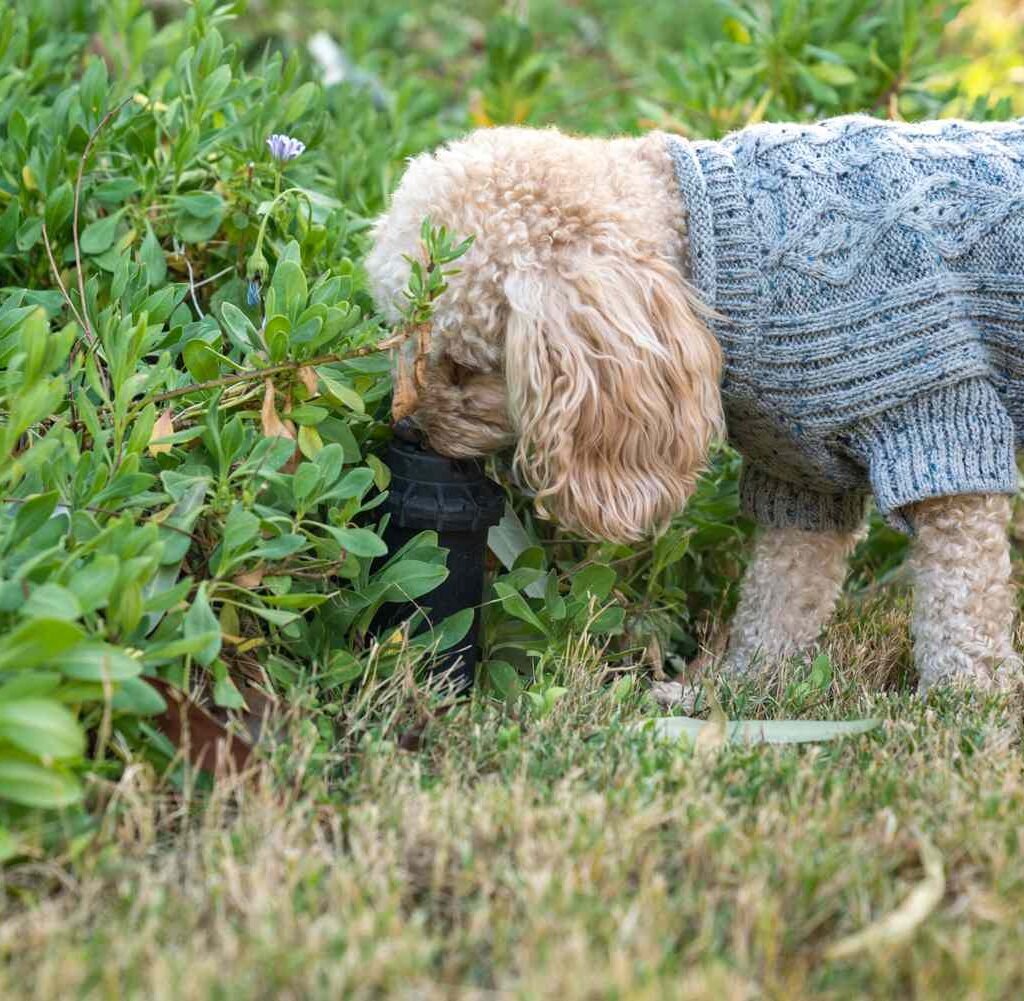
Before taking action, it’s essential to understand why pets behave this way. Knowing the reasons behind their actions helps you implement effective solutions.
Common Reasons:
- Natural Instincts: Dogs dig to bury items, explore, or relieve boredom. Cats often scratch or dig to mark territory.
- Curiosity: Pets investigate new plants, flowers, and soil out of curiosity, leading to accidental damage.
- Playfulness: Active pets may run through garden beds or chase toys, trampling delicate plants.
- Marking Territory: Dogs and cats urinate or roll in soil to leave scent marks, which can harm plants.
- Seeking Comfort: Pets may dig to create cool resting spots in soil or shaded areas.
Understanding the motivation behind the behavior helps you choose the right preventive strategies.
1. Create Pet-Friendly Zones
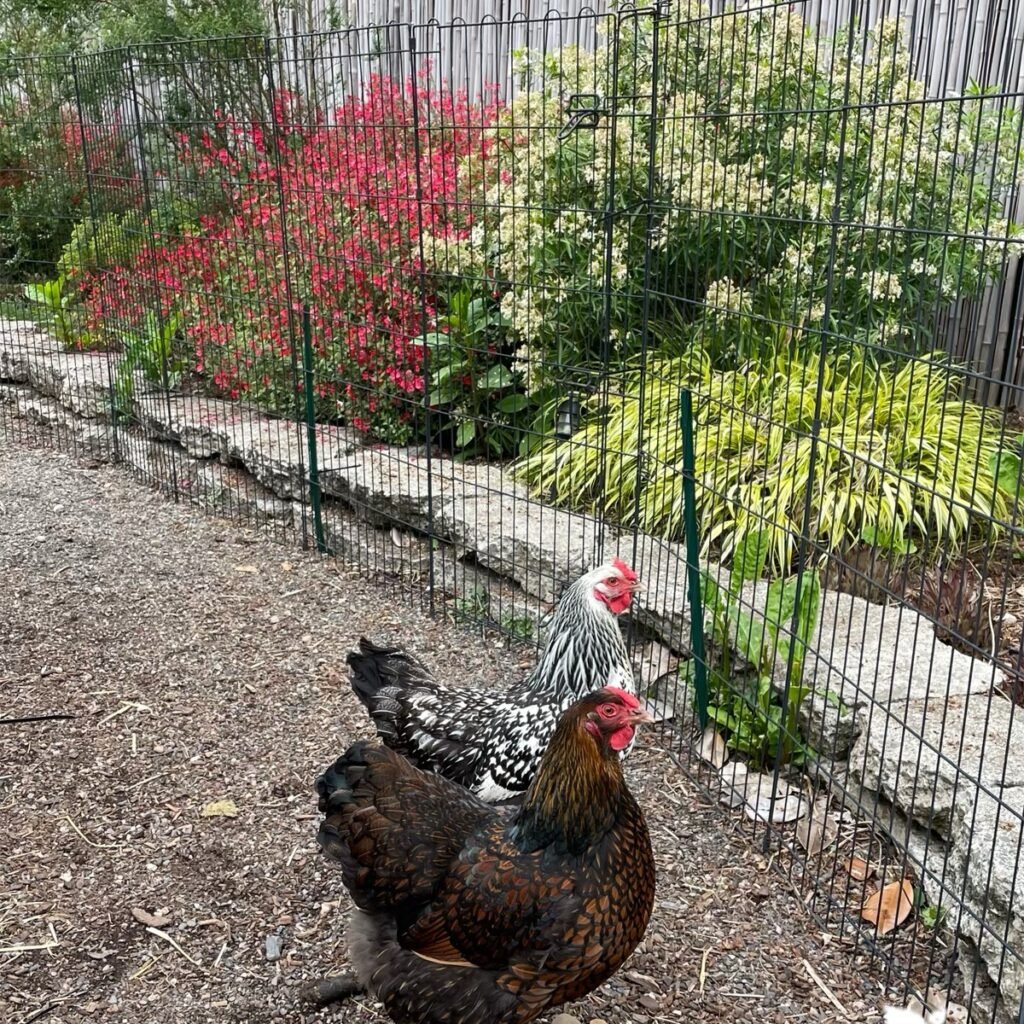
One of the most effective strategies is to designate specific areas for pets, keeping them away from sensitive plants.
How to Implement:
- Lawn or Play Area: Dedicate a section of the yard for pets to dig, play, and relieve themselves. Fill it with sand or soft soil for digging dogs.
- Paths and Trails: Create pathways for pets to move around without disturbing flower beds or vegetable plots.
- Outdoor Beds or Kennels: For dogs, a shaded kennel or outdoor bed gives a safe space without accessing garden areas.
Tip: Using pet-safe mulch like sand or shredded bark in these zones keeps them comfortable while preserving your plants.
Benefits: Pets get their own space, reducing frustration and minimizing garden damage.
2. Install Physical Barriers
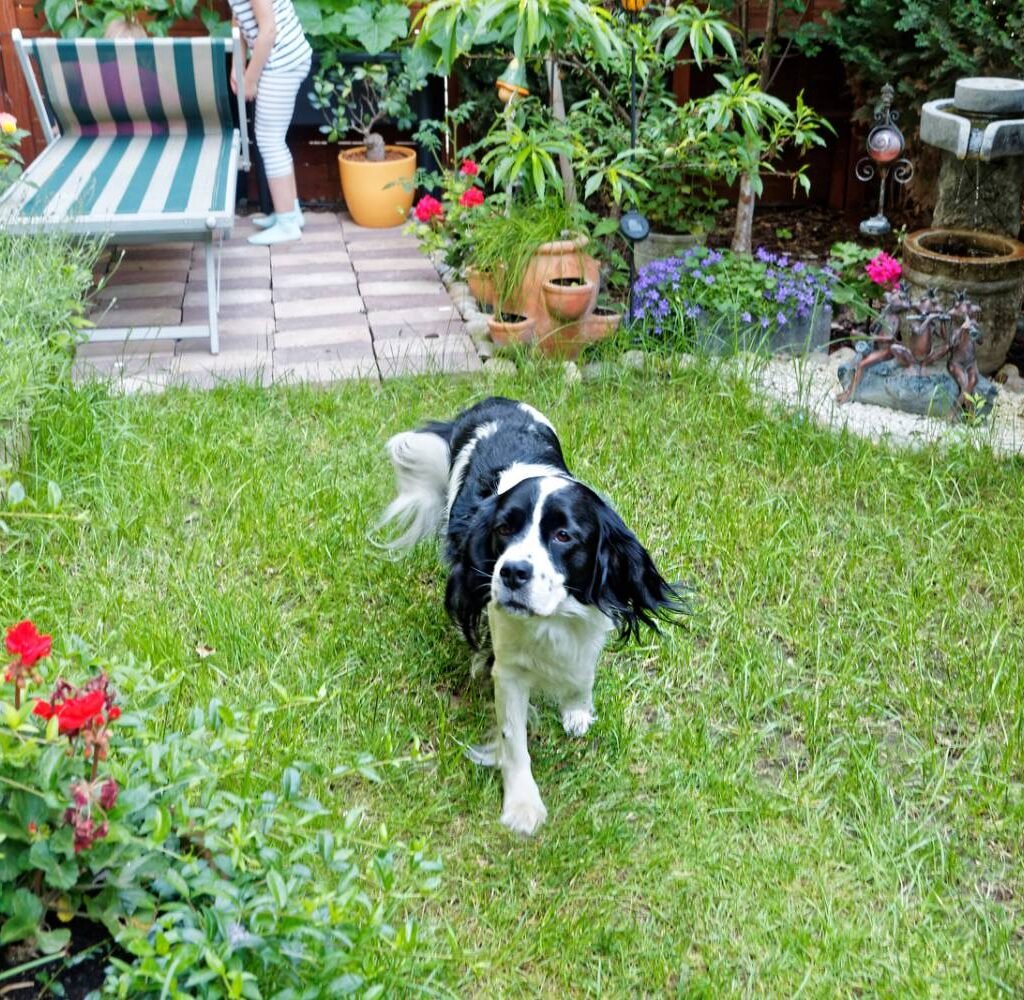
Physical barriers are a direct way to protect your garden from unwanted pet intrusion.
Options Include:
- Fencing: Low fences or garden borders prevent pets from entering beds. Chicken wire or decorative fencing works well for small areas.
- Raised Beds: Elevate plants above ground level to prevent pets from stepping or digging into soil.
- Plant Cages or Netting: Use cages around young or fragile plants to deter chewing and trampling.
- Mulch Barriers: Sharp or uncomfortable mulch (pine cones, thorny branches) can discourage pets from walking on beds.
Tips for Effective Barriers:
- Ensure fencing is tall enough for dogs to jump over or cats to climb under.
- Combine multiple barrier types for maximum protection.
- Regularly inspect barriers for gaps or weak points.
Benefits: Physical barriers are a long-term solution, protecting plants even when pets are unsupervised.
3. Use Repellents Safely
Repellents are an effective tool to discourage pets from entering restricted areas without harming them.
Types of Repellents:
- Commercial Pet Repellents: Available in sprays or granules, designed to deter dogs and cats with safe ingredients.
- Homemade Solutions: Citrus peels, vinegar, coffee grounds, or cayenne pepper can deter pets naturally.
- Scent Deterrents: Plants like rue, lavender, or rosemary may repel cats and dogs due to their smell.
Tips for Using Repellents:
- Reapply after rain or watering.
- Test sprays on a small plant area first to avoid chemical damage.
- Combine repellents with training for better results.
Benefits: Repellents reduce pet interference without requiring constant supervision.
4. Train Your Pets

Behavioral training is a long-term solution that benefits both you and your pets.
Training Techniques:
- Positive Reinforcement: Reward pets when they use designated areas or avoid garden beds. Treats, praise, or playtime reinforce good behavior.
- Command Training: Teach commands like “stay,” “leave it,” or “off” to prevent garden access.
- Supervised Access: Allow pets in the garden only under supervision, redirecting them when they approach sensitive areas.
- Clicker Training: Use clickers to mark desirable behaviors, encouraging pets to learn boundaries quickly.
Tips for Training:
- Be consistent—training takes time and repetition.
- Avoid punishment—it can create fear or aggression.
- Combine with physical deterrents for optimal results.
Benefits: Well-trained pets respect garden boundaries and are safer and happier.
5. Choose Pet-Resistant Plants
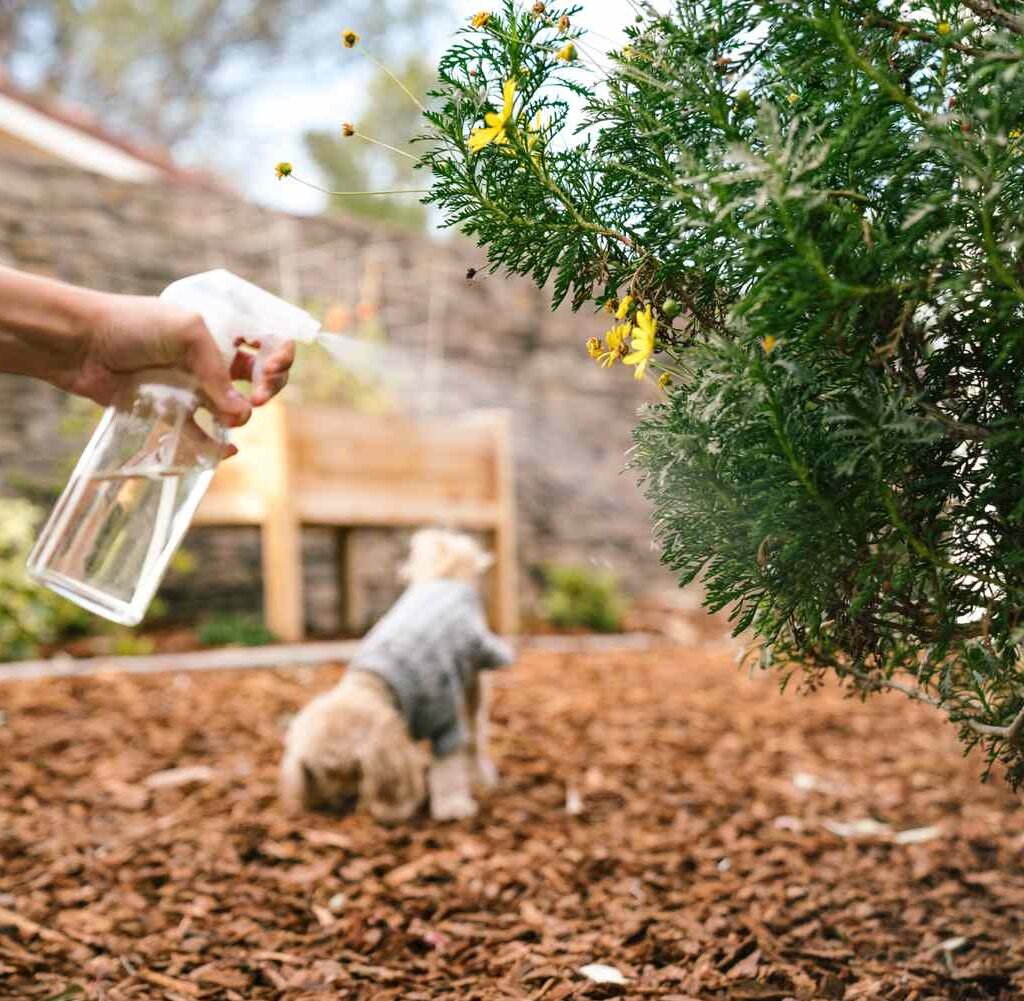
Certain plants are less appealing or harmful to pets, and incorporating them into your garden can reduce damage.
Examples of Pet-Resistant Plants:
- Shrubs: Boxwood, barberry, or rosemary
- Herbs: Lavender, thyme, or sage
- Ornamentals: Marigolds, geraniums, or ferns
Tips for Plant Selection:
- Avoid toxic plants that could harm pets if ingested.
- Mix pet-resistant plants along garden borders to act as natural deterrents.
- Consider textured or aromatic plants that pets tend to avoid.
Benefits: Choosing the right plants reduces garden damage while keeping pets safe.
6. Protect Soil and Young Plants
Pets are often attracted to soft soil or new seedlings. Protecting these areas ensures plants can thrive.
Methods Include:
- Mulching: Apply coarse mulch or bark to discourage digging.
- Row Covers: Lightweight fabrics protect young vegetables from paws and chewing.
- Garden Cloches: Individual plant covers shield delicate seedlings.
- Soil Alternatives: Use gravel or pebbles around sensitive plants to make soil less attractive for digging.
Benefits: Protecting vulnerable areas increases plant survival rates and reduces pet-related stress.
7. Create Enrichment for Pets
Boredom often drives pets to damage gardens. Providing alternatives keeps them occupied.
Enrichment Ideas:
- Interactive Toys: Balls, ropes, or puzzle feeders keep pets entertained.
- Digging Boxes: Sandbox or designated digging area lets pets satisfy natural instincts.
- Exercise and Playtime: Daily walks, runs, or play sessions reduce excess energy that might otherwise damage plants.
- Training Games: Mental stimulation through training or scent games reduces destructive behavior.
Benefits: A well-stimulated pet is less likely to turn to your garden for entertainment.
Conclusion
Stopping pets from damaging your garden requires a combination of design, deterrence, and training. By creating pet-friendly zones, using barriers, employing repellents, training consistently, choosing pet-resistant plants, and enriching your pet’s environment, you can protect your garden while keeping pets happy and healthy.
Remember, the goal is not to restrict pets harshly but to strike a balance between a thriving garden and a playful pet. With patience, planning, and creativity, you can enjoy lush, beautiful plants without sacrificing your pets’ freedom or happiness.
A harmonious garden is possible—one where both your plants and your pets can flourish together.
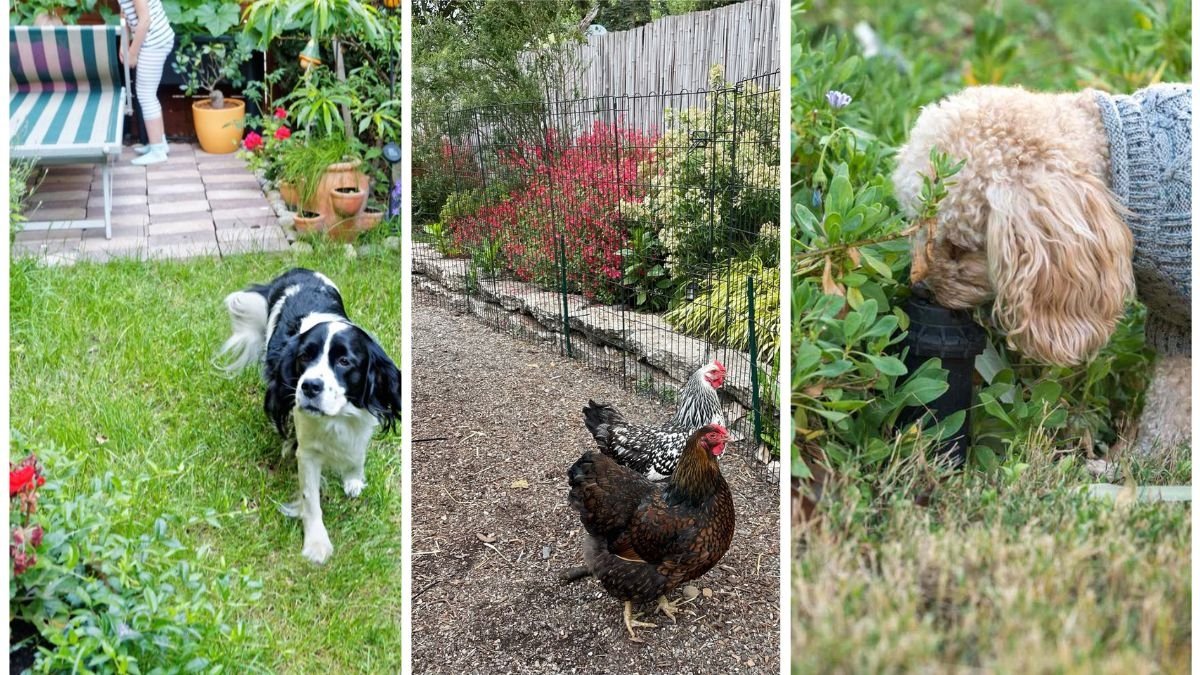
Leave A Comment